
Recommended reading for Taphophiles
|
 |
Famous
Graves
Lynn F. Pearson / Paperback / Published 1998 / 144 pp, 117 ills.
The graves of the famous are of abiding interest,
both for their often unexpected and unusual locations, and for
the light they throw on individual lives. This book gives fascinating
details of nearly one thousand graves of famous Britons at home
and abroad, and also a few foreigners buried on British soil.
In highly readable form, it conveys not only the 'where' but
the 'why' of graves, using crucial biographical information to
provide an insight into famous lives and their endings. The text
helps the reader to locate specific graves, it also features
an easy-to-use index, an introduction to the history of burial
and cremation practices, and a glossary explaining obscure funeral
terms. Over a hundred B&W photographs of gravestones, mausolea,
cemeteries and churches illustrate the amazing history of funeral
art and the delightful craftsmanship of individual memorials. |
 |
Discovering
Epitaphs
Geoffrey N. Wright / Paperback / Published 1996/ 96 pp, 53 ills.
Inscriptions on gravestones yield fascinating
information about the dead, their lives and occupations and the
way they died. There may well be a verse epitaph of a philosophical
or moralistic nature, but wit and humour, sometimes unintentional,
creep in to enliven the sombre nature of the message. In this
book, the late Geoffrey N. Wright first traces the background
history of churchyard memorials and then describes many examples
of inscriptions and epitaphs which somehow bring us much closer
to the people they commemorate and the communities in which they
lived. |
 |
Victorian
Undertaker
Trevor May / Paperback / Published 1996 |
 |
The Undertaking, Tales from the Dismal Trade.
Thomas Lynch
The American poet, Thomas Lynch, is also hired
to bury the dead, to cremate them and to tend to their families
in a small Michigan town where he serves as the funeral director.
In the conduct of these duties he has kept his eyes open and
his ears tuned to the vernacular sound of love and grief.
also in paperback
|
|



|
The Permanent Series
Permanent
Italians : An Illustrated Guide to the Cemeteries of Italy
Judi Culbertson, Tom Randall / Paperback / Published 1996
Permanent
Londoners : Illustrated Guide to the Cemeteries of London
Judi Culbertson, Tom Randall / Paperback / Published 1991
Permanent
Parisians : An Illustrated Guide to the Cemeteries of Paris
Judi Culbertson, Tom Randall / Paperback / Published 1991
|
| |
London
Cemeteries: An Illustrated Guide & Gazetteer
Hugh Meller
This work records the cemeteries of London, describing their
rich variety of buildings, monuments, epitaphs and flora and
fauna. It also deals with cemetery history, planning, architecture
and natural history. Altogether, 103 cemeteries are covered,
along with the famous people buried there.
|
|
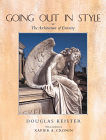
|
Going
Out in Style : The Architecture of Eternity
Douglas Keister, Xavier Cronin
Depicts the endless variety of mausoleum styles
in cemeteries across the United States...the book features dozens
of full-color photographs portraying the majesty and mystique
of the private mausoleum
|
|

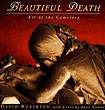
|
Saving
Graces : Images of Women European Cemeteries
David Robinson
In many cemeteries, particularly in Europe, one
can find 19th-century sculptures of idealized images of women,
elaborately posed and sculpted with great care and artistic flair.
David Robinson's photographs capture the sensual beauty and mystery
of these lifelike sculptures. In her foreword, Joyce Carol Oates
explores the many implications of the grief-stricken, extremely
provocative female figures - the obsession with mortality, the
rituals of mourning, the conflation of death and the erotic,
and the perfect female form as a male fantasy and a symbol of
status.
also
Beautiful Death : Art of the Cemetery
David Robinson, Dean R. Koontz / Hardcover / Published 1996
Intriguing look at death - and the way people
attempt to come to terms with it in funerary monuments and graveside
gestures. Robinson roamed the cemeteries of Europe, including
Pere-Lachaise, Montparnasse and Montmartre in Paris, the cemete
ries of London and village churchyards in England, the Jewish
Cemetery in Prague, and cemeteries across France, Spain, Portugal,
and Italy
now out of print Find "Beautiful
Death : Art of the Cemetery" by David Robinson on BookFinder.com
|
|

|
The
Tombstone Tourist : Musicians
Scott Stanton / Paperback / Published 1998
The final resting places of over 200 of the
20th century's late musical greats, from Howlin' Wolf to Benny
Goodman to Janis Joplin. From France's Gothic Pere Lachaise Cemetery
(where the remains of Chopin and Jim Morrison lie) to Hollywood's
Forest Lawn (home to the bones of Karen Carpenter, Andy Gibb,
and Liberace), Stanton covers 6 countries, 44 states, and over
a million miles for his gravesite review.
Profiled alphabetically, the life, music, death, shrines, archives,
and burial site of each musician is interesting and insightful,
and the black-and-white photographs are a nice touch.
|
|
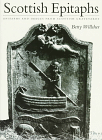
|
Epitaphs
and Images from Scottish Graveyards
Betty Willsher
This is an illustrated collection of epitaphs
divided into sections, such as death, resurrection, the professions
and trades, eulogies and epitaphs quaint and curious.
|
|
 |
Highgate Cemetery, Victorian Valhalla
Photographs by John Gay, Text by Felix Barker.
Excellent B&W Photos, well reseached history
of Highgate Cemetery.
now out of print
Find "Highgate
Cemetery, Victorian Valhalla" by Felix Barker on BookFinder.com
|
|
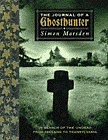
|
Journal
of a Ghosthunter
Simon Marsden
During a year-long journey beginning in southern
Ireland and progressing through the British Isles, France and
Germany to the mountains of Transylvania, photographer Marsden
sought out Europe's most haunted locations. His black and white
images reveal the ruins where lost souls still roam.
The
Haunted Realm
Simon Marsden
Photographer Simon Marsden's interest in the
supernatural began in childhood as he played hide-and-seek in
the attic of his family's ancient house, ever vigilant for the
appearance of the "family ghost". It wasn't until later
that he discovered the craft of photography and developed an
enduring fascination with the magic of time and light, and the
enigma of "reality" that these elements conjure up.
|
| |
Awful
Ends
David M. Wilson
This anthology of funeral inscriptions, both
real and fictional, is gathered from sources all over the British
Isles and America.
|
| |
The
Art of Remembering
Harriet Frazer, Lucy Lambton (Introduction)
Published to coincide with an exhibition at
Blickling Hall, this book celebrates the skills of independent
memorial makers and lettering artists. It contains photographs
of all 54 works in the exhibition, along with essays on life,
death, spirituality, the English tradition of memorials and the
controversy over churchyard rules and regulations.
|
 |
The
Art of Death
Nigel Llewellyn
Paperback - 160 pages Reaktion Books
Visual culture in the English death ritual
|
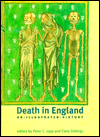 |
Death
in England
Peter Jupp (Editor), Clare Gittings (Editor)
A social history of death from the earliest
times to Diana, Princess of Wales. As we discard the 20th century
taboo about death, this book charts the story of the way in which
our forebears coped with a fundamental aspects of their daily
lives. The book reveals how attitudes, practices and beliefs
about death have undergone constant change: how, why and at what
ages people died; plagues and violence; wills and deathbeds;
funerals and memorials; beliefs and bereavement. This wide-ranging
analysis of death in England is illustrated throughout with photographs
and images, their diversity reflecting and breadth of issues
and periods covered.
|
 |
Bearing
the Dead : The British Culture of Mourning from the Enlightenment
to Victoria (Literature in History)
by Esther Schor
Mourning as a cultural phenomenon has become
opaque to us in the twentieth century, Schor argues. This book
is an effort to recover the culture of mourning that thrived
in English society from the Enlightenment through the Romantic
Age, and to recapture its meaning. Mourning appears here as the
social diffusion of grief through sympathy, as a force that constitutes
communities and helps us to conceptualize history.
|
| |
|
| |
|
| |
|
| |
|
| |
|